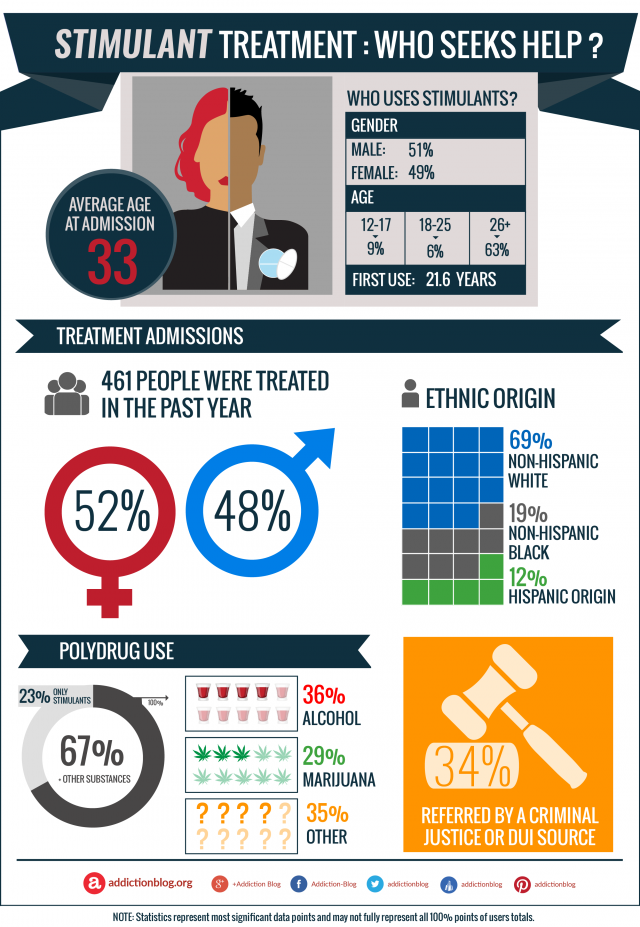Who seeks stimulant addiction treatment in the U.S.?
In 2012, nearly 360,000 people received treatment for stimulant addiction. About 34% of them were referred to treatment by a criminal justice/DUI source. Peak ages when people seek help and are admitted to treatment for stimulant addiction include:
- Peak age among non-Hispanic White male admissions was 31 years old
- Peak age among non-Hispanic Black male admissions was 32 years old
- Peak age of both non-Hispanic White females and non-Hispanic Black females was 30 years old
How do people use meth?
The most common routes of administration for primary illicit stimulant users (methamphetamine/amphetamines) were mainly:

- smoking (62%)
- injection (25%)
- inhalation (8%)
What about polydrug use?
Around 67% of people admitted to treatment for stimulant abuse disorder reported abuse of additional substances. What other drugs did they use?
- 36% used alcohol along with a stimulant drug
- 29% smoked marijuana and abused a stimulant drug
Why are stimulant addiction recovery programs necessary?
Treatment of stimulant addiction is necessary to prevent future health problems or other life complications. In fact, the sooner you seek professional medical help for yourself or for a loved one, the greater the chances for long-term sobriety and recovery success.
You can speak with your primary care physician or family doctor, a school counselor, your psychologist, or licensed psychiatrist for referral to a stimulant addiction treatment program…or Call 1-877-688-2356 to speak with helpline specialists about your recovery options. The helpline is confidential, toll-free, and available 24 hours a day, 7 days a week.
How do people get help?
The first step is to ask for it. Addiction programs can be either inpatient or outpatient, and should include services such as:
- Admission and evaluation
- Detoxification from stimulants
- Talk Therapy
- Medication Assisted Treatment
- Educational and relapse prevention session
- Support group meetings such as 12 step programs, SMART Recovery, Life Ring, or Cocaine Anonymous.
- Aftercare program and relapse prevention
Treatment for any substance abuse problem is crucial for longer term success. Especially if we take into consideration that stimulant addicts are not the only ones who pay the cost.
Stimulant questions
Still have any questions about U.S. trends in drug use and treatment? We welcome you to post them in the comments section at the bottom of the page. We do our best to provide a personal and prompt response to all legitimate inquiries. In case we don’t know the answer to your particular question, we will gladly refer you to professionals who can help.








Related Posts